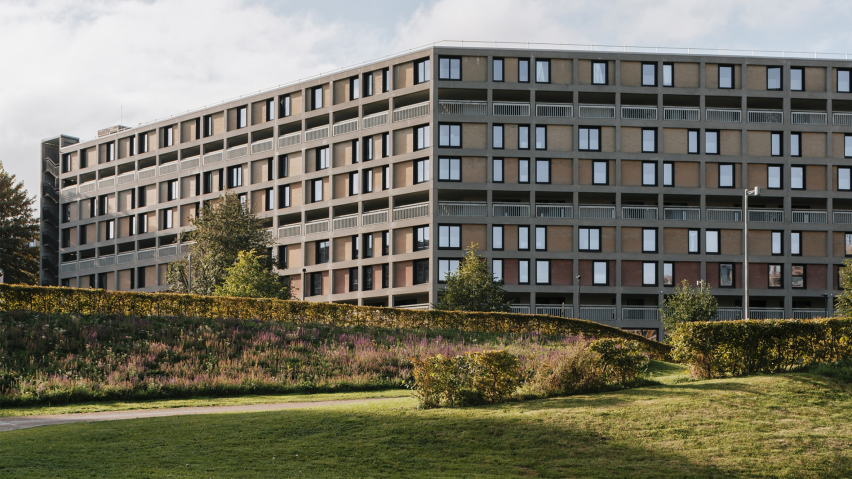
Park Hill Phase 2 named best project as Dezeen Awards sustainability winners revealed
Park Hill Phase 2 has won Dezeen Awards 2023 sustainable project of the year following the announcement of all six sustainability category winners, which were revealed at this evening's ceremony.
The six winners awarded in Dezeen's annual awards programme are located in Australia, China and the UK.
Park Hill Phase 2 crowned sustainable project of the year
Park Hill Phase 2 by Mikhail Riches won the prestigious sustainable project of the year award, sponsored by Brookfield Properties. It was also named sustainable renovation of the year.
The judges chose the brutalist building in Sheffield for setting "an important precedent for how the UK should deal with its ageing housing stock."
"Park Hill was the clear winner in this category due to its remarkable scale and incredible technical skill," said the master jury. "This project takes an icon of post-war British housing and infuses it with new life."
"The architects have managed to make the building more beautiful while also making it more beneficial, proving that the two things can exist at the same time," they continued.
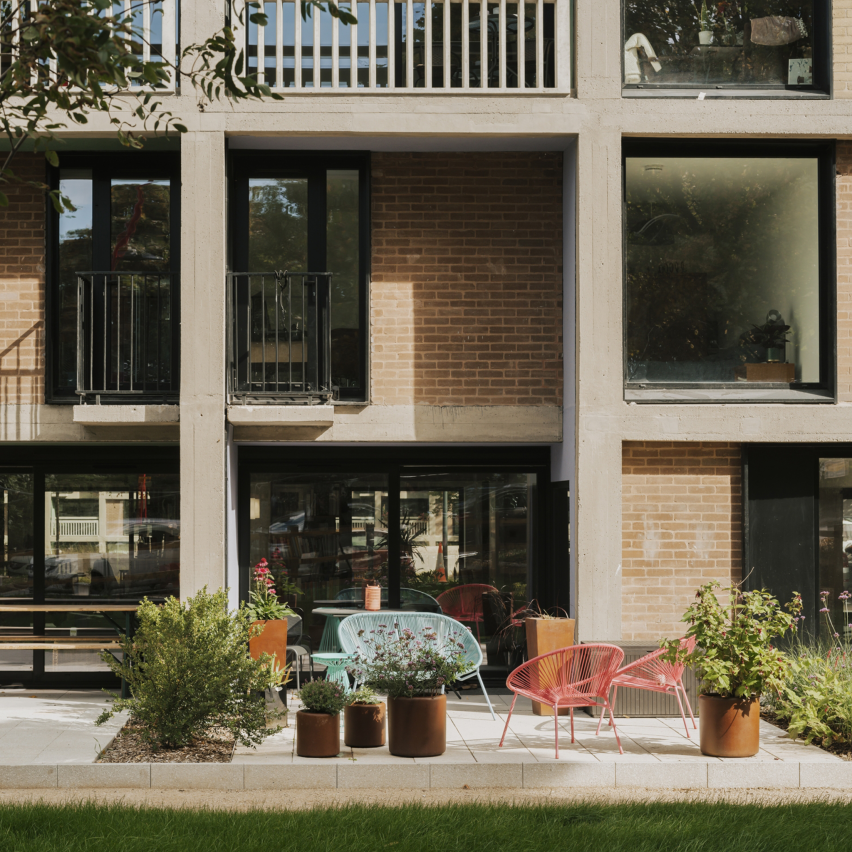
The winning Sheffield housing estate was competing with projects including a series of organically shaped modules from recycled oyster shells in Port Phillip Bay, a bar featuring discarded distillery barrels in Shanghai and an affordable housing bloc with a tonal palette expressed through different materials in Melbourne.
View the winning sustainability projects on the Dezeen Awards website or read below:

Sustainable project of the year and sustainable renovation of the year: Park Hill Phase 2 by Mikhail Riches
A redevelopment project of a former brutalist housing estate in Sheffield won sustainable project of the year. Following years of decline, the Park Hill restoration aims to restore the 'original beauty' of the brutalist housing estate.
Alongside preserving the original building fabric, one of architect Mikhail Riches' main objectives was to improve its energy performance and mitigate heat loss through insulation.
"Mikhail Riches has taken the ruin of a concrete post-war mass housing project, which was an iconic building of its time, and shown how to care for its legacy while giving it dignity," said the master jury.
"Park Hill is a great example of what can be done to preserve and enhance existing buildings to create high-quality places to live, rather than knocking something down and starting from scratch."
Read more about Park Hill Phase 2 by Mikhail Riches ›
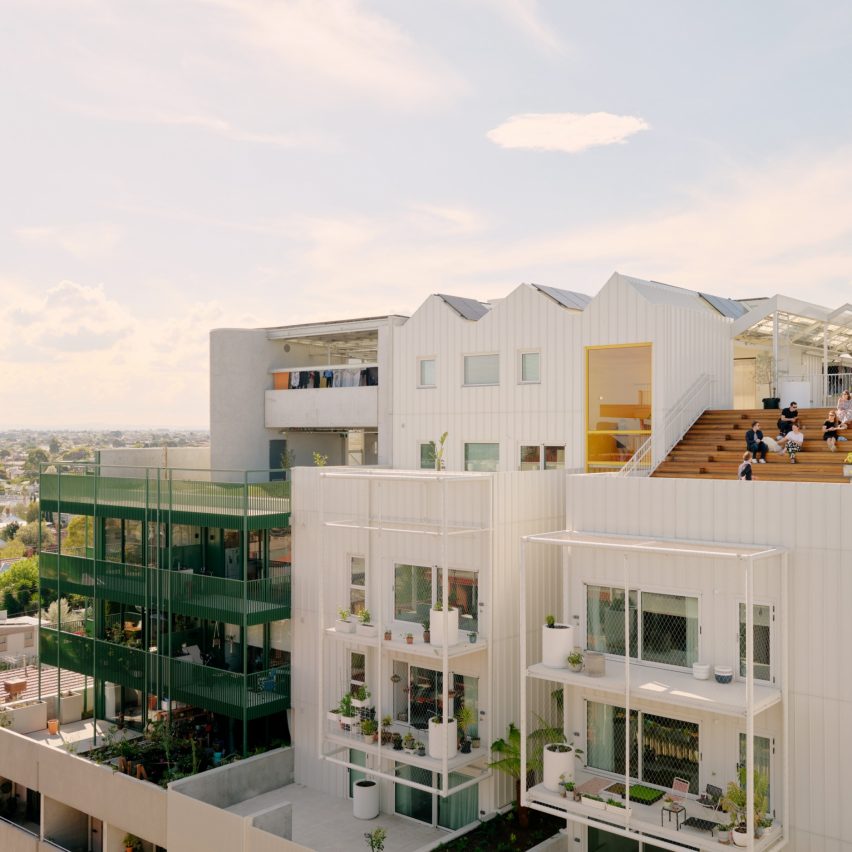
Sustainable building of the year: Nightingale Village by Architecture architecture, Austin Maynard Architects, Breathe, Clare Cousins Architects, Hayball and Kennedy Nolan
An affordable housing block in the Brunswick neighbourhood of Melbourne won sustainable building of the year.
Six leading Australian architecture firms collaborated to create Nightingale Village a housing development containing single-family homes, apartments and offices.
The master jury said: "Nightingale Village provides a replicable, market-viable model for how new housing can benefit both people and planet."
"It offers affordable homes in the face of a housing crisis while reducing inhabitant's reliance on fossil fuels, cutting out all need for natural gas and even attaining special permission to provide only 20 parking spaces for more than 200 homes – a radical decision in its suburban Australian context," they continued.
Highly commended: The Rajkumari Ratnavati Girl's School by Diana Kellogg Architects
New York-based Diana Kellogg Architects was highly commended for their oval-shaped school in India's Thar Desert.
The building references the nearby sand dunes using locally sourced hand-carved sandstone to create the 836-square-metre fort-like school.
"Beyond the long-lasting societal benefits of providing education for young women in a challenging context, this Indian school demonstrates how we can harness existing, nature-based solutions to create more sustainable buildings," said the judges.
This category is sponsored by Moda Living.
Read more about The Rajkumari Ratnavati Girl's School by Diana Kellogg Architects ›
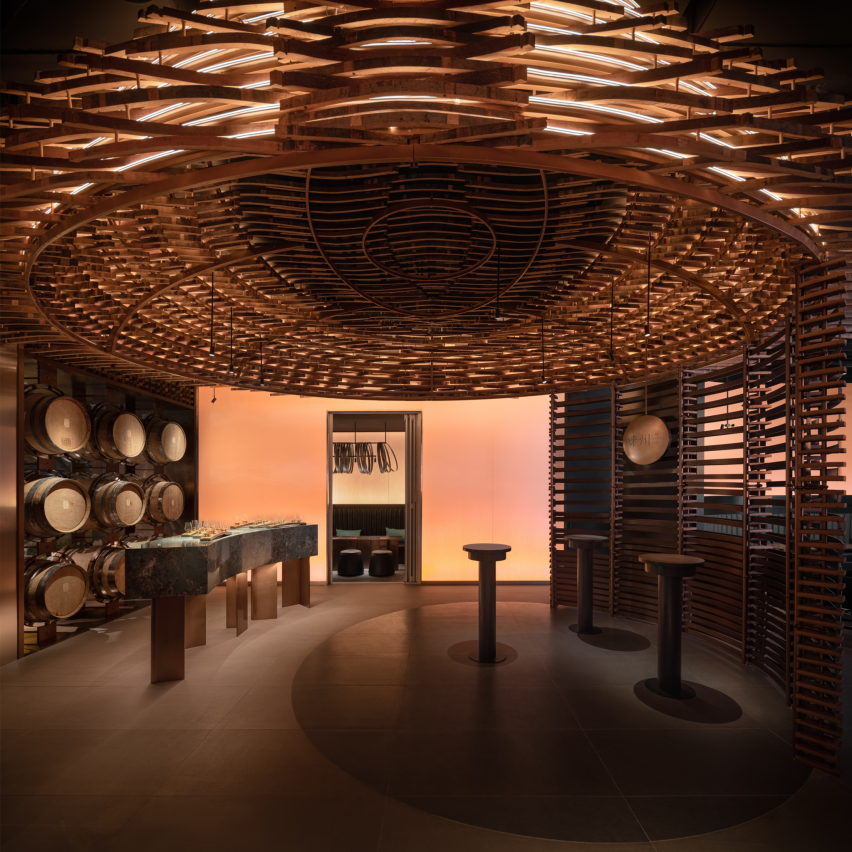
Sustainable interior of the year: Lai Zhou Bar by RooMoo Design Studio
Chinese interior studio RooMoo won sustainable interior of the year for its redesign of a bar in Shanghai adorned with discarded whisky barrels. Lai Zhou Bar used 6,000 oak offcuts from the Laizhou Distillery's whiskey barrels to create a ringed lattice structure around the bar.
In contrast to the wooden barrel pieces, the interior features a green marble countertop and black leather furnishings.
"This whisky bar made from used whisky barrels sets a striking precedent for how companies can repurpose their own waste materials into something beautiful and meaningful," said the judges.
"By allowing more components to be added over time as barrels fall out of use, the interior highlights the continuous need to keep closing the loop."
Read more about Lai Zhou Bar by RooMoo Design Studio ›
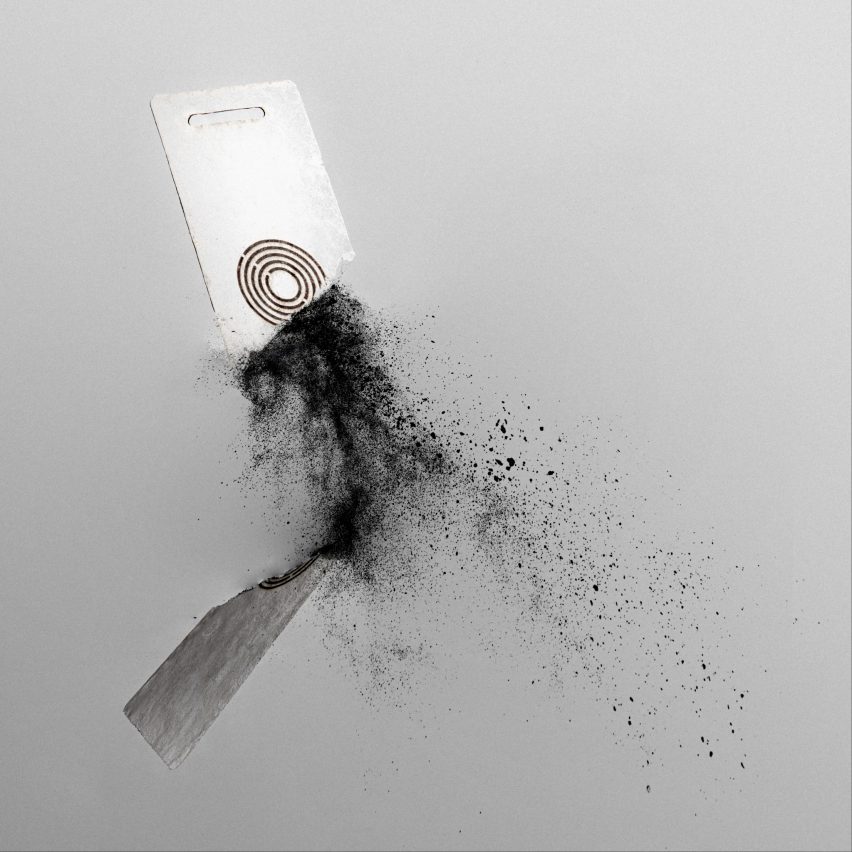
Sustainable design (consumer) of the year: PulpaTronics RFID Tags by PulpaTronics
A group of design graduates won sustainable design (consumer) of the year for their paper RFID tags. Start-up PulpaTronics devised a paper-only version of a radio-frequency identification (RFID) tag – an electronic tracker attached to products.
PulpaTronics' paper RFID tag contains no metal or silicon components and can be easily recycled to cut down on waste from single-use electronics.
The sustainability master jury hopes that awarding this project will help to "incentivise wider adoption, which could help to bring about huge systemic change in a world where traceability and accountability are increasingly crucial."
"PulpaTronics' trackable RFID tags are a great example of mono-material design, using biomaterials instead of metals or plastics to create a smart product that is both recyclable and compostable," said the judges.
Read more about PulpaTronics RFID Tags by PulpaTronics ›
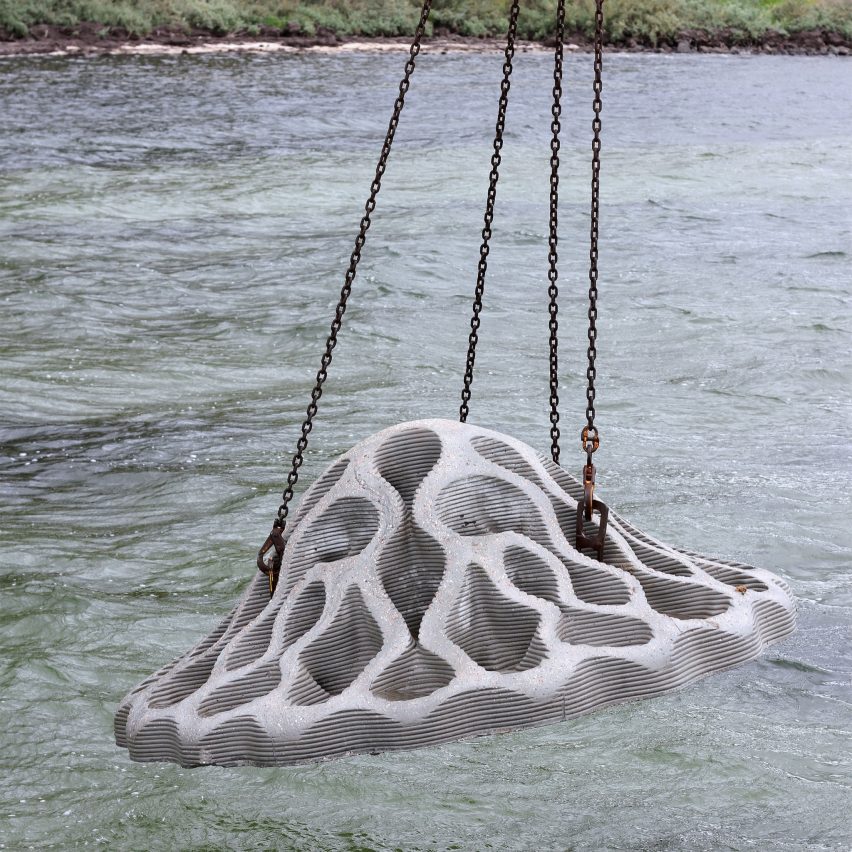
Sustainable design (building product) of the year: Erosion Mitigation Units (EMU) by Reef Design Lab
Melbourne-based practice Reef Design Lab won sustainable design (building product) of the year for their series of organically shaped modules to combat coastal erosion.
Made using concrete blended with oyster shells, the geometry of the Erosion Mitigation Units (EMU) helps optimise conditions for marine life such as providing habitats for fish, octopus and crustaceans and offering shaded surfaces for sponges and coral to grow on.
"This project offers an alternative to traditional coastal erosion defences that emulates nature and was designed first and foremost to benefit marine life rather than humans," said the judges.
"The Erosion Mitigation Units go beyond being a simple building product, helping to construct a healthier ecosystem along our coastlines while also protecting humans from the fallout of storm surges and erosion."
This category is sponsored by SketchUp.
Read more about Erosion Mitigation Units (EMU) by Reef Design Lab ›
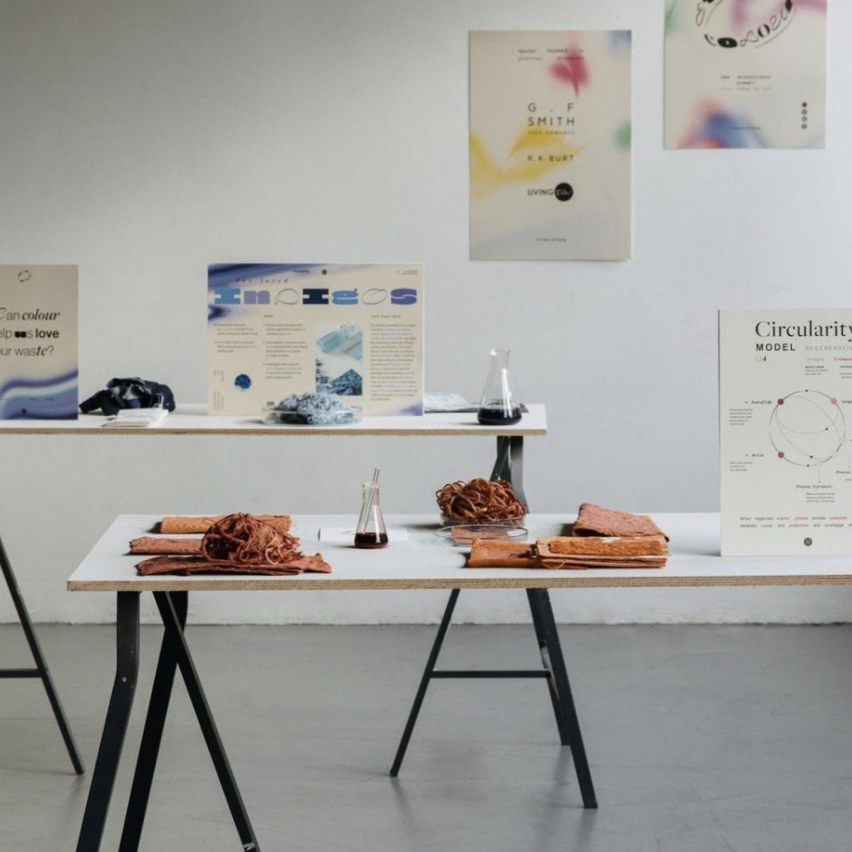
Material Innovation of the year: Colorifix by The Mills Fabrica Investment Fund
A company creating a non-toxic alternative to synthetic dyes won material innovation of the year. The Mills Fabrica has invested in Colorifix, a company which makes genetically engineered pigments for the dyeing industry using bacteria.
Colorifix produces a number of pigments and colours including indigos, mauves, pastels and beiges using genetically engineered bacteria.
"Colorifix offers a transformative new way of dying textiles using bio-fabrication that can be applied to both traditional fibres and the new generation of biomaterials," said the master jury.
"It's a crucial advancement for the industry given that pretty much all textiles – no matter how sustainable – are ultimately coloured and most dyes today are petroleum-based."
Read more about Colorifix by The Mills Fabrica Investment Fund ›
Dezeen Awards 2023
Dezeen Awards celebrates the world's best architecture, interiors and design. Now in its sixth year, it has become the ultimate accolade for architects and designers across the globe. The annual awards are in partnership with Bentley Motors, as part of a wider collaboration that will see the brand work with Dezeen to support and inspire the next generation of design talent.

